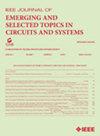GNS:基于图的片上网络屏蔽,用于早期防御 MPSoC 中的恶意节点
IF 3.8
2区 工程技术
Q2 ENGINEERING, ELECTRICAL & ELECTRONIC
IEEE Journal on Emerging and Selected Topics in Circuits and Systems
Pub Date : 2024-08-05
DOI:10.1109/JETCAS.2024.3438435
引用次数: 0
摘要
在快速发展的系统设计领域,多处理器片上系统(MPSoC)通过片上网络(NoC)集成了一系列知识产权(IP)以执行复杂的并行应用,其规模和复杂性都有了显著提高。然而,这一进步也导致了恶意第三方 IP(M3PIP)引起的安全攻击的出现,如拒绝服务(DoS)。目前许多检测 DoS 攻击的方法都涉及大量硬件开销,而且在早期识别异常情况方面往往效率低下。针对这一缺陷,我们提出了基于图形的 NoC 屏蔽(GNS),这是一种精心设计的强大策略,可在 DoS 出现的早期阶段检测、定位和隔离恶意 IP。我们方法的核心是使用图形神经网络(GNN)和长短期记忆(LSTM)检测模型。这一组合利用了网络流量数据和路由依赖图,可有效追踪网络拥塞的源头并精确定位攻击者。我们的大量实验分析验证了 GNS 框架的有效性,基于纯 4*4 网状 NoC 系统,每个路由器的硬件开销仅为 1.8%,却实现了 98% 的检测准确率和定位能力。其检测性能超过了所有其他最先进的研究成果和相同背景下最直接的单一机器学习推理模型。此外,硬件开销也明显优于其他安全方案。我们系统的另一个主要特点是实施了一种信用穿插机制。该机制专门用于隔离参与基于泛洪的 DoS 的 M3PIP,并有效缓解恶意流量的传播。这种方法大大增强了基于 NoC 的 MPSoC 的安全性,与其他模型相比,它能提供准确性更高的早期检测。最重要的是,与最先进的解决方案相比,GNS 可减少高达 75% 的硬件开销,从而在安全实施的效率和效果之间取得了平衡。本文章由计算机程序翻译,如有差异,请以英文原文为准。
GNS: Graph-Based Network-on-Chip Shield for Early Defense Against Malicious Nodes in MPSoC
In the rapidly evolving landscape of system design, Multi-Processor Systems-on-Chip (MPSoCs) have experienced significant growth in both scale and complexity, by integrating an array of Intellectual Properties (IPs) through Network-on-Chip (NoC) to execute complex parallel applications. However, this advancement has led to the emergence of security attacks caused by Malicious Third-Party IPs (M3PIPs), such as Denial-of-Service (DoS). Many current methods for detecting DoS attacks involve significant hardware overhead and are often inefficient in identifying anomalies at an early stage. Addressing this gap, we propose the Graph-based NoC Shield (GNS), a robust strategy meticulously crafted to detect, localize, and isolate malicious IPs at the very early stage of DoS appearance. Central to our approach is the use of a Graph Neural Network (GNN) and Long Short-Term Memory (LSTM) detection model. This combination capitalizes on network traffic data and routing dependency graphs to efficiently trace the source of network congestion and pinpoint attackers. Our extensive experimental analysis validates the effectiveness of the GNS framework, demonstrating a 98% detection accuracy and localization capabilities, achieved with minimal hardware overhead of 1.8% in each router, based on a pure 4*4 Mesh NoC system. The detection performance exceeds that of all other state-of-the-art works and most straightforward single machine learning inference models within the same context. Additionally, the hardware overhead is notably superior compared to other security schemes. Another key feature of our system is the implementation of a credit interposing mechanism. It was specifically designed to isolate M3PIPs engaging in Flooding-based DoS and effectively mitigate the spread of malicious traffic. This approach significantly enhances the security of NoC-based MPSoCs, offering early-stage detection with the superior accuracy compared to other models. Crucially, the GNS achieves this with up to 75% less hardware overhead than state-of-the-art solutions, thus striking a balance between efficiency and effectiveness in security implementation.
求助全文
通过发布文献求助,成功后即可免费获取论文全文。
去求助
来源期刊

IEEE Journal on Emerging and Selected Topics in Circuits and Systems
ENGINEERING, ELECTRICAL & ELECTRONIC-
CiteScore
8.50
自引率
2.20%
发文量
86
期刊介绍:
The IEEE Journal on Emerging and Selected Topics in Circuits and Systems is published quarterly and solicits, with particular emphasis on emerging areas, special issues on topics that cover the entire scope of the IEEE Circuits and Systems (CAS) Society, namely the theory, analysis, design, tools, and implementation of circuits and systems, spanning their theoretical foundations, applications, and architectures for signal and information processing.
 求助内容:
求助内容: 应助结果提醒方式:
应助结果提醒方式:


